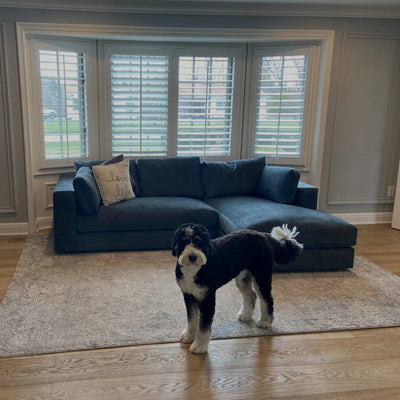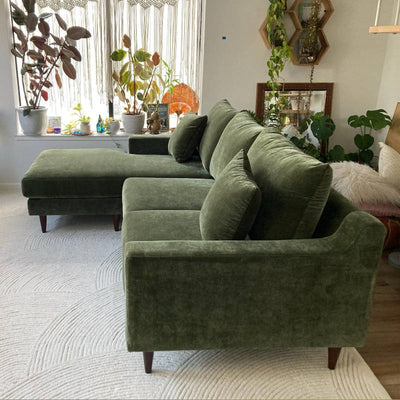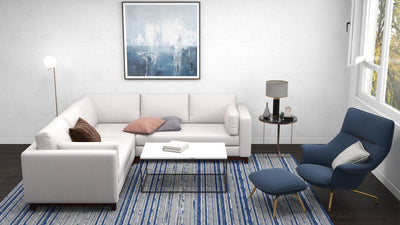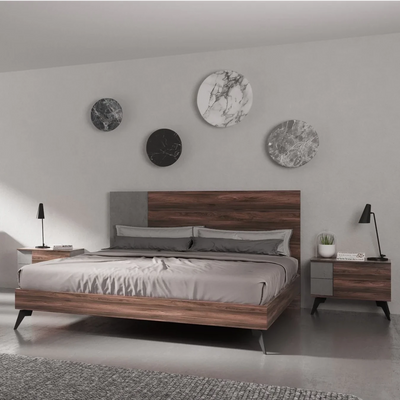A well-known saying goes, "You get what you pay for." However, this can be dangerously misleading when purchasing upholstered furniture.
It's entirely possible to spend thousands of dollars on a sofa that needs replacing within five years or less. Conversely, some couches under $1000 can maintain their appearance and comfort for a decade or more.
High-quality, custom-built sofas are designed to retain their look and comfort for 15 to 20 years or more. These premium non-reclining sofas typically start at around $3000, with leather options exceeding $5000. However, even some expensive sofas priced over $3000 may wear out in less than five years.
Reclining couches and sectionals are particularly notorious for their combination of high prices and short lifespans. This topic will be covered in more detail later in the article.
Mass-produced sofa frames and foundations generally last at least 10 years, with many fabrics holding up just as long. However, the weak point in most mid-range mass-produced couches is the cushions. Seat cushion cores often need to be replaced every 3 to 5 years to maintain their shape and comfort, and back cushion filling may require even more frequent replacement.
Unfortunately, few people replace their cushion cores, leading to many homeowners living with sofas that look and feel worn out within five years or less. Cushion lifespans can be even shorter when used by individuals larger than average. A 250-pound person can wear out a standard 1.8 density foam cushion core in just 1 to 3 years. While 2.5 density cushion cores can better support heavier individuals, most people are unaware of this option when considering replacement cushions.
Larger seat cushions also last longer than smaller ones because they distribute weight over a greater surface area, reducing pressure per square inch and extending the life of the foam cores.

1) How Does Frame Construction Affect a Durable Sofa’s Lifespan?
If you’ve spent at least $1500 on a sofa, the frame will generally last at least 10 years with average use by average-sized people. Frames made from solid wood, 3/4″ hardwood plywood, or engineered wood panels typically have a lifespan of around 10 years. If you’re looking for a sofa that will last 20+ years, consider upgrading the frame to 7/8″ plywood or 4/4″ solid hardwood. These upgrades can increase the retail price by at least $200 but can significantly extend the sofa’s lifespan.
The most durable frames, found in the most expensive traditional-style sofas, are made from 5/4″ thick solid hardwood, such as maple or oak, and can last over 50 years. However, be cautious of expensive sofas with weak frames. Cheap frames made from particleboard and softwoods, often combined with stretchable webbing, may fail within 10 years. These weak frames can be found in both low-cost and high-end sofas.
CAUTION! Some well-known leather sofa brands use weak, low-quality frames to keep their furniture affordable. High-quality leathers combined with inferior frames and foundations can result in beautiful leather sofas priced over $2000 that may collapse in less than 10 years.
2) How Does Foundation Construction Affect a Sofa’s Lifespan?
Most sofa foundations in models priced above $1500 should last at least 10 years. Platform foundations and inexpensive sinuous wire (no-sag) spring foundations typically last at least a decade. High-quality Pirelli webbing, drop-in coil spring foundations, and 8-way hand-tied foundations can last 20 years or more. However, certain low-cost foundations found in sofas under $1000 may fail within just a few years.
For example, cheap flexolator foundations, with loose helical springs, can easily fall apart if someone sits down heavily or jumps on the sofa. These are only slightly cheaper than sinuous wire but are used in very cheap sofas or where the style demands a flat foundation rather than the arch that sinuous wire provides.
Stretchable webbing, which resembles high-quality Pirelli (non-stretchable) webbing, is far cheaper and less durable. Foundations made with stretchable webbing are quicker to produce and can be installed by lower-paid workers with less strength and skill. This type of webbing is often used in combination with low-cost particleboard or softwood frames, which do not hold staples well. Over time, the staples that attach the stretchable webbing can pull out of the frame, creating a sagging seat.
This stretchable webbing, combined with particleboard or softwood frames, is sometimes found in expensive leather seating made by well-known brands. A video above shows the consequences of combining good-quality leather with a cheap frame and stretchable webbing foundation.

3) How Do Cushions Determine a Sofa’s Lifespan?
Seat cushions are arguably the most important component in determining the lifespan of a high-quality sofa. In most sofas, regardless of price range, the cushions will need to be replaced before any other component.
The lifespan of foam seat cushions is determined by several factors, including foam density, thickness, surface area, and the weight of the person using them. Most seat cushions are made with polyurethane foam cores wrapped in Dacron polyester fiber. Foam density affects how long cushions retain their shape and firmness but is not the same as firmness. Cushions lose firmness with use, and higher-density foam loses firmness more slowly than lower-density foam.
1.8 density foam cushions, for instance, may feel noticeably less firm within a year, whereas 2.5 density foam cushions may retain much of their initial firmness for over 10 years. The density of the foam remains constant over time, but the firmness and resiliency (ability to bounce back) will diminish. For example, a 20-year-old 1.8 density foam cushion may still have the same density but will likely need replacement due to a significant loss of firmness.
For an average-sized removable seat cushion on a three-seat sofa:
- 1.8 density foam has an estimated lifespan of 3–5 years.
- 2.0 density foam has an estimated lifespan of 4–6 years.
- 2.5 density foam has an estimated lifespan of 10–15 years.
Foams with densities of 3.0 and higher are primarily used for high-use commercial and institutional furniture. The height of the foam core (not including additional thickness from polyester or other wrappings) also affects cushion lifespan. Increasing foam core thickness by 1/2 inch can add about 20% to a cushion’s lifespan, while reducing thickness by the same amount can decrease it by 20%.
Larger seat cushions last longer because they distribute weight over a greater surface area, reducing the pressure on each square inch of foam. For example, replacing three seat cushions with two larger ones increases the surface area by a third, extending the cushion lifespan.
Cushion lifespan is also affected by the weight of the person using them. A 250-pound individual sitting on a 1.8 density foam cushion might wear it out within 1–2 years, whereas someone weighing 150 pounds may get 5 years of use from the same cushion. A 2.5 density foam cushion, when used by the same 250-pound individual, would hold up much better, with an expected lifespan of 8–12 years.
Many people mistakenly believe that extra-firm cushions last longer, but they don’t. High-quality spring-down or spring-fiber cushions can last even longer than 2.5 density foam. A 250-pound individual could use a high-quality spring-down cushion for over 15 years with minimal change in firmness or comfort.
Sofa brands offering optional 2.5 (or higher) density or spring-down cushions provide the best value. Sofas with these cushion cores will last 2–3 times longer than those with 1.8 density foam cushions. If those options aren’t available within your budget, opt for a sofa with larger seat cushions. A two-cushion sofa will generally last longer than a three-cushion sofa of the same size.

4) How Do Fabrics & Leather Affect a Sofa’s Lifespan?
The choice of fabric or leather can significantly impact the price of a sofa but rarely affects its lifespan. A fabric’s cost has little correlation with its durability or cleanability. Inexpensive fabrics can often be more durable and stain-resistant than more expensive options.
Residential furniture fabrics range in cost from $2.50 to $25 per yard at the mill. It’s common to find $5–$10 per yard fabrics on sofas selling for $2000 or more. An average-sized sofa requires around 16 yards of fabric, so the manufacturer’s cost ranges from $40 to $400. However, the retail value of fabric is not directly tied to its mill cost.
For example, a designer fabric with a listed retail price of $80 per yard might cost $40 per yard wholesale for professional interior designers and $16 per yard for manufacturers purchasing full rolls. Volume pricing could bring the cost down to $12 per yard.
Real leather can last 20 years or more, but this longevity is often irrelevant to the lifespan of most mid-priced sofas. Sofas selling for less than $2000, and even many higher-priced ones, are often made with components that fail long before the leather wears out. Cushion lifespan may be as short as 3–5 years, while the frame and foundation may last only 10 years or less. Reclining and sleeper mechanisms often need replacement within 5–10 years. Repairing or replacing frames, foundations, or mechanisms on sofas purchased for $2000 or less is usually not cost-effective. Similarly, replacing removable cushions on sofas priced at $1500 or less is rarely worth the investment.
Few people are willing to pay the cost of repairing or replacing worn-out non-removable seat cushions.
5) Leather couches are not always made with "real leather."
Salespeople can be very adept at implying that you are purchasing real leather furniture without actually saying it. Synthetic faux leathers, made from polyurethane, vinyl, or polyester, are entirely synthetic materials. Bonded leathers contain only 10–20% real leather, made from leftover hide scraps that are crushed, mixed with adhesives, and used as the fabric backing. The facing of bonded leather is entirely synthetic.
"Leather Match" combines real top-grain corrected leather with faux leather. The real leather is used for the seats, backs, and inside arms, while vinyl or other faux leathers are used for the rest of the sofa.
100% synthetic faux leathers, typically used in residential seating, cost around $4–$8 per yard and have an estimated lifespan of over 10 years. Bonded leathers, costing about the same as faux leathers, often have a much shorter lifespan of 1–5 years. Many consumers have complained about bonded leather peeling within 1–5 years, and once peeling begins, it cannot be repaired or replaced.
Leather match sofas use approximately one-third real leather and two-thirds faux leather, with low-cost corrected top-grain hides. Retail prices for leather match are usually $200–$300 higher than the same sofa in synthetic faux leather or bonded leather, but the estimated lifespan remains around 10 years, the same as for 100% synthetic faux leathers.
“All-leather” sofas made with low-cost corrected hides add approximately $300–$500 to the cost of leather match. Higher-quality, more expensive leathers can add hundreds or even thousands of dollars more. High-quality natural leathers improve with age if regularly cleaned and maintained, while low-cost protected leathers may last 20 years but do not improve as they age. Protected leathers offer superior resistance to minor scratches or stains but are more difficult to repair for deep scratches or rips.






















